The Taipei City Government yesterday started the demolition of Jiancheng Circle (建成圓環) in the Dadaocheng (大稻埕) area.
The Taipei Market Administration Office said that the demolition would cost about NT$2.5 million (US$78,304) and should be completed by February.
The structure is to be converted into a park, with a reservoir below the circle, which has been declared a historical structure, to be preserved, the office said.
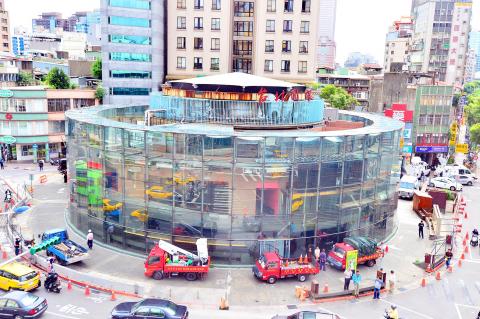
Photo: Wang Yi-sung, Taipei Times
Taipei Department of Culture Chief Secretary Liu Te-chien (劉得堅) said that a plan to preserve the reservoir would be submitted next month to the Taipei Cultural Assets Assessment Committee for review.
The Taipei Park and Street Lights Office, which is to oversee work on the park, said the facility has a NT$19 million budget and is scheduled to be completed in July.
“Time rolls on and some things are bound to become memories,” Taipei Mayor Ko Wen-je (柯文哲) said, when asked to comment on the demolition on the sidelines of an event to promote next year’s Summer Universiade.
The structure had been rebuilt from a night market into an indoor food court during former president Ma Ying-jeou’s (馬英九) term as Taipei mayor, which cost NT$200 million, Ko said.
“I am not saying that he had been negligent, but he built something strange, so much so that [the city government] could not figure out how to improve its functionality, and it had become a mausoleum,” he said.
In 1908 the circle was a bustling market and, from the 1950s to early 1990s, a night market, until it fell into disuse after the main building burned down in two separate fires in 1993 and 1999.
In an attempt to modernize the decades-old market, Ma in 2001 ordered the demolition of the food circle and built a two-story cylindrical glass building that opened in October 2003.
However, the modern building did not appeal to food vendors, residents or tourists.
A Taipei resident, surnamed Cheng (鄭,) said he used to frequent the facility with friends when it was a night market, but has not visited in more than 10 years.
Though he feels somewhat nostalgic that the modern structure is being torn down, it is about time that the facility be removed so that the land can be put to better use, Cheng said.
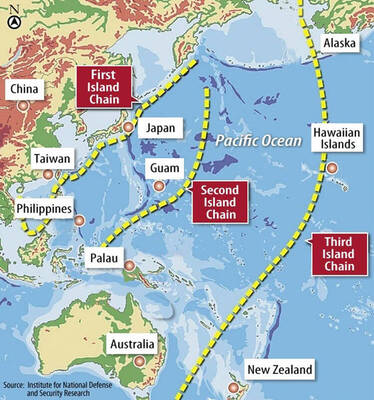
The US government has signed defense cooperation agreements with Japan and the Philippines to boost the deterrence capabilities of countries in the first island chain, a report by the National Security Bureau (NSB) showed. The main countries on the first island chain include the two nations and Taiwan. The bureau is to present the report at a meeting of the legislature’s Foreign Affairs and National Defense Committee tomorrow. The US military has deployed Typhon missile systems to Japan’s Yamaguchi Prefecture and Zambales province in the Philippines during their joint military exercises. It has also installed NMESIS anti-ship systems in Japan’s Okinawa
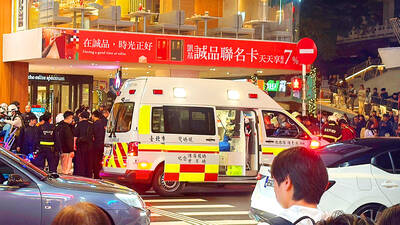
TRAGEDY STRIKES TAIPEI: The suspect died after falling off a building after he threw smoke grenades into Taipei Main Station and went on a killing spree in Zhongshan A 27-year-old suspect allegedly threw smoke grenades in Taipei Main Station and then proceeded to Zhongshan MRT Station in a random killing spree that resulted in the death of the suspect and two other civilians, and seven injured, including one in critical condition, as of press time last night. The suspect, identified as a man surnamed Chang Wen (張文), allegedly began the attack at Taipei Main Station, the Taipei Fire Department said, adding that it received a report at 5:24pm that smoke grenades had been thrown in the station. One man in his 50s was rushed to hospital after a cardiac arrest
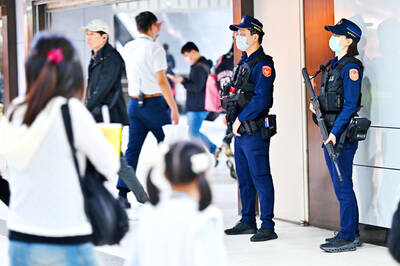
PUBLIC SAFETY: The premier said that security would be tightened in transport hubs, while President Lai commended the public for their bravery The government is to deploy more police, including rapid response units, in crowded public areas to ensure a swift response to any threats, President William Lai (賴清德) said yesterday after a knife attack killed three people and injured 11 in Taipei the previous day. Lai made the remarks following a briefing by the National Police Agency on the progress of the investigation, saying that the attack underscored the importance of cooperation in public security between the central and local governments. The attack unfolded in the early evening on Friday around Taipei Main Station’s M7 exit and later near the Taipei MRT’s Zhongshan
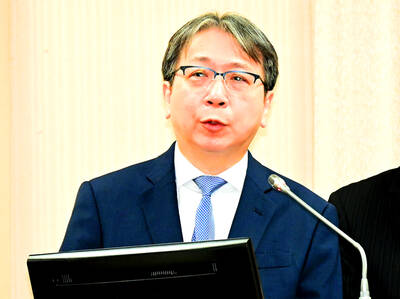
ON ALERT: Taiwan’s partners would issue warnings if China attempted to use Interpol to target Taiwanese, and the global body has mechanisms to prevent it, an official said China has stationed two to four people specializing in Taiwan affairs at its embassies in several democratic countries to monitor and harass Taiwanese, actions that the host nations would not tolerate, National Security Bureau (NSB) Director-General Tsai Ming-yen (蔡明彥) said yesterday. Tsai made the comments at a meeting of the legislature’s Foreign Affairs and National Defense Committee, which asked him and Minister of National Defense Wellington Koo (顧立雄) to report on potential conflicts in the Taiwan Strait and military preparedness. Democratic Progressive Party (DPP) Legislator Michelle Lin (林楚茵) expressed concern that Beijing has posted personnel from China’s Taiwan Affairs Office to its